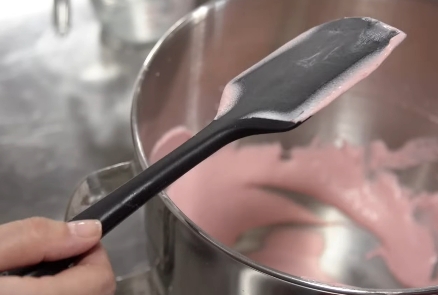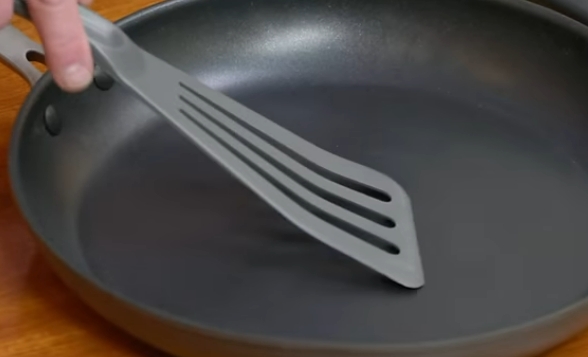As a salesperson working in a factory that manufactures silicone and plastic kitchen utensils, I get asked all the time: “How heat-resistant are your kitchen tools?” It’s a great question, and one that every customer should ask before choosing the right kitchen utensils for their needs. In this blog, I’ll explain what makes a kitchen utensil heat-resistant, what temperatures they should stand, and why it matters.
1. What Does Heat Resistance Mean?
When we talk about heat resistance, we mean how well a material can handle high temperatures without getting damaged, melting, or losing its shape. For kitchen utensils, heat resistance is critical because we often use them in direct contact with hot surfaces, such as frying pans, baking trays, and stovetops.
Heat-resistant kitchen utensils are made from materials that can withstand high temperatures, allowing you to cook comfortably without worrying about the utensil warping, melting, or leaching harmful chemicals.
2. What Temperature Is Considered Heat-Resistant?
The specific temperature that a utensil can handle depends on the material it is made from. For example:
- Silicone Utensils: High-quality silicone can usually withstand temperatures between 250°C (482°F) and 300°C (572°F), depending on the type. Silicone is a popular material for kitchen tools because it’s flexible, durable, and heat-resistant. If you’re using a silicone spatula or a spoon rest, you can be confident it won’t melt or lose its shape even if you leave it in a hot pan for a while.
- Plastic Utensils: Plastic kitchen tools vary in heat resistance depending on the type of plastic. Most heat-resistant plastic utensils are made from materials like Nylon, which can handle up to around 200°C (392°F). However, cheaper plastics might start to soften at lower temperatures, so always check the material before buying.
- Stainless Steel Utensils: Stainless steel, often used for spatulas, tongs, and whisks, has excellent heat resistance. Stainless steel utensils can withstand very high temperatures, often up to 500°C (932°F) or more. However, they may still get very hot to the touch, so be careful when using them in high-heat situations.

3. Why Does Heat Resistance Matter?
Heat-resistant kitchen utensils are essential for safety and functionality in the kitchen. Here are a few reasons why:
- Safety: Using utensils that can withstand high temperatures prevents the risk of them melting or releasing harmful chemicals when exposed to heat. Some low-quality plastics and cheap materials might not be heat-resistant and can leach harmful substances into your food.
- Durability: A heat-resistant utensil will last longer. If your kitchen tools are made from low-heat-resistant materials, they will warp, crack, or lose their shape after only a few uses in high-heat conditions. This means you’ll have to replace them sooner, leading to more waste and more cost.
- Performance: Kitchen tools that are heat-resistant maintain their functionality during cooking. For example, a heat-resistant silicone spatula allows you to stir, flip, or scrape hot food without worrying about it bending or melting. This makes cooking more efficient and enjoyable.
4. How to Test Heat Resistance?
If you’re not sure whether a kitchen utensil is heat-resistant, you can usually find information on the packaging or product description. However, here are some quick ways to test the heat resistance of kitchen tools:
- Check the Material: Most manufacturers will list the heat tolerance of their products on the packaging or product page. If you’re unsure, ask your supplier directly. For example, high-quality silicone will usually list a heat range (like 250°C to 300°C).
- Visual Inspection: If you’ve had the utensil for a while, check it for signs of damage. If a silicone spatula is cracked, discolored, or has a sticky surface, it’s a sign that it has been exposed to too much heat. Similarly, plastic utensils that have become soft or melted might not be heat-resistant.
- Perform a Simple Test: You can test a small part of the utensil with hot water. Heat water to near boiling (around 95°C/203°F), and dip the utensil into the water for a short time. If it becomes soft, deforms, or changes color, it’s not heat-resistant enough for cooking with hot pans.
5. Choosing the Right Heat-Resistant Utensil

When buying kitchen utensils, always choose those that suit your cooking style and the temperatures they’ll be exposed to. Here are a few tips:
- For High-Heat Cooking: If you frequently cook at high temperatures, such as stir-frying or grilling, silicone or stainless steel utensils are ideal. They won’t melt or soften under high heat.
- For Gentle Cooking: If your cooking involves gentler heat, such as baking or simmering, high-quality plastic utensils like Nylon may be sufficient.
- Always Read Labels: Pay attention to the product labels or descriptions. Most manufacturers will list the maximum temperature that a utensil can withstand. If in doubt, always choose a utensil with a higher heat resistance to be safe.
6. Why It’s Important for Us as Manufacturers to Get It Right
As a factory salesperson, it’s important to make sure that the products we offer meet the standards for heat resistance. Our goal is to provide customers with safe, durable, and functional kitchen utensils that can handle the demands of cooking. When customers trust our products to be heat-resistant, they are more likely to return for future orders and recommend us to others.
As manufacturers, we are responsible for choosing the right materials and ensuring that our products pass rigorous quality checks. This is why we put so much emphasis on selecting heat-resistant materials for our silicone, plastic, and stainless-steel kitchen tools.
Conclusion
In conclusion, the heat resistance of a kitchen utensil is a critical factor when choosing the right tools for your kitchen. Whether it’s silicone, plastic, or stainless steel, the material should be able to withstand the temperatures you’ll be cooking at without getting damaged. As a salesperson from a kitchenware factory, I can assure you that we prioritize heat resistance in our products to ensure safety, durability, and performance in your kitchen.
When shopping for heat-resistant kitchen utensils, always check the material and heat tolerance to ensure you’re getting the right tools for your cooking needs. By making the right choice, you can enjoy cooking with confidence, knowing that your utensils will stand up to the heat.

